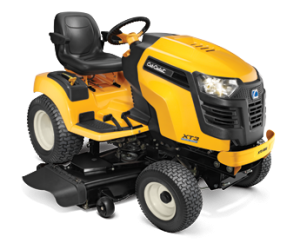 When the engine in your Cub Cadet can’t hold a steady speed, it can be difficult or impossible to use. Fortunately, while there are several possible causes that can result in surging, these are easy to identify and remedy. Here’s what you need to look at to get your equipment to run like it should.
When the engine in your Cub Cadet can’t hold a steady speed, it can be difficult or impossible to use. Fortunately, while there are several possible causes that can result in surging, these are easy to identify and remedy. Here’s what you need to look at to get your equipment to run like it should.
What is Surging?
Surging happens when the engine isn’t getting enough fuel or air to run at full speed, but it can still get enough to run at a lower speed. When air and fuel are limited, the engine speed drops, it runs better, and then it accelerates until it hits this limit again. This causes a cycle of fluctuating engine speeds which makes it difficult and sometimes dangerous to operate equipment. Fixing this problem requires inspecting and remedying problems across the entire intake including the fuel system, filter, carburetor, and governor.
Air Filter Issues
A dirty filter can keep the engine from drawing in the air it needs to run at full speed, but still provide enough air at lower RPM.
Paper filters can be cleaned by tapping them against a hard surface to knock free any loose dirt. Foam filters can be cleaned in water and a mild detergent or with a non-flammable solvent. After cleaning, the foam needs to be soaked in clean motor oil and any excess oil should be squeezed out before reinstalling. Paper filters should be replaced if they’re saturated with dirt and all filters should be replaced if they are damaged. When cleaning the filters, remember to wipe out the filter housing and make sure it hasn’t been damaged, which can let the filter flex under load and restrict airflow.
Fuel System Problems
As gas leaves the fuel tank, air is needed to replace it. This air enters through small holes in the gas cap. If those holes are clogged, the pressure inside the tank will drop, keeping the fuel from being drawn through the fuel line.
Lines and filters should be inspected for clogs and cracks to ensure the fuel leaving the tank makes it to the carburetor.
If you have old fuel, it may not want to burn. As a general rule, when powering a four stroke engine, gasoline should be used within one month of purchase, and within three months if it has been mixed with a fuel treatment. Fuel injected engines can usually run on older gas, while two-stroke engines are much more sensitive to stale fuel. Carburetor jets can clog if dirty or old fuel passes through them, particularly ethanol-free fuel, which will gum up as it ages. Fuel containing ethanol is less likely to turn sticky, but it will draw water from the surrounding air, making it harder to burn. In either case, the old fuel should be drained and replaced with fresh fuel.
Vacuum leaks
As the piston moves down during the intake stroke, that space expands, drawing air through the filter and mixing it with fuel from the carburetor or injector before it enters the combustion chamber. However, if there are any leaks, the engine can draw in outside air that hasn’t had fuel added to it, leaning out the mixture.
Start by tightening all the bolts around the carburetor: these can work loose after being subjected to engine vibration, letting the carburetor separate from the head. If the engine is still surging, inspect the gaskets between the carburetor and the head to ensure they’re creating a tight seal.
Governor Issues
Cub Cadet engines use a pneumatic governor to control engine speed. The flywheel has fan blades on it that move air across the engine for cooling. The governor has a small air vane next to the flywheel that changes position based on how much air passes it. It’s linked to the throttle by a spring: once the engine is up to speed, the air pushes on the vane and it pulls on the spring, closing the throttle. A bent spring can keep the vane from reacting quick enough to the control the throttle, while vane damage and dirt around the flywheel can cause turbulence that can keep the governor from working effectively.
Fix Your Cub Cadet the Right Way with OEM Parts
www.cubparts.com is a certified Cub Cadet dealer so we can supply you with the right parts for your equipment whether you have an old tractor or a new string trimmer. Our site lets you see where parts fit on factory diagrams and list items using factory descriptions so you can be sure you’re ordering exactly what you need. Best of all, we can ship your order to any address in the U.S. and Canada.
